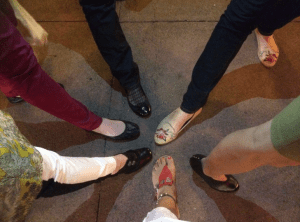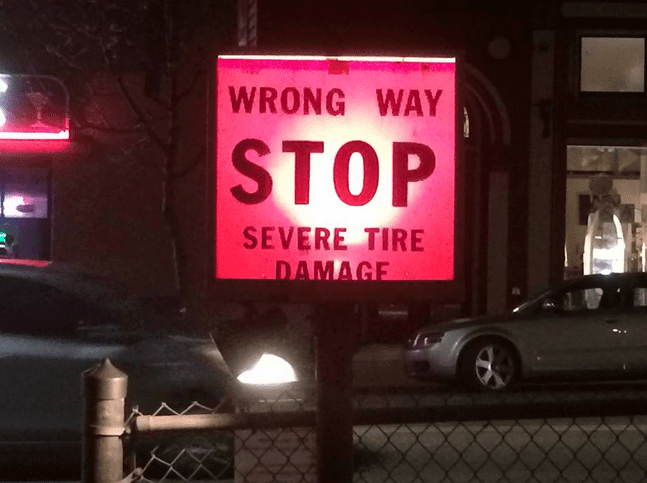Editors’ Note: This article is part of the Public Square 2014 Summer Series: Conversations on Religious Trends. Read other perspectives from the Mormon community here.
THE FOLLOWING POST HAS BEEN REVISED
I attended the Ordain Women action on April 5th. I supported it, and I support its ongoing political work. Anytime a group of people get together to lobby for change for women it’s worth paying attention. Historical public action to highlight the lack of equality for women has earned some women the right to vote, it has earned women reproductive rights, the right to own property, the right to employment and pay parity. It has challenged the cult of domesticity, the sexual objectification of women, the normalization of patriarchy, it has drawn attention to the plight of domestic violence, and has more recently sought to challenge sexist culture. Actions that I support.
But while I consider myself nominally a feminist I am mostly a womanist.
So I feel cautious. I embrace OW guardedly. When I walked with my sisters on April 5th my internal dialogue was thus:
- Ordain fewer men.
- Unordain some men.
- Stop ordaining male children.
- Separate priesthood from church leadership, administration and management.
- Ordain some women
- Give both men and women the right to participate in church leadership, administration and management, but don’t call that priesthood.
It’s a given that women aren’t equal to men in the church – and any argument that brawls with this fact is a nonsense. While men are granted the exercise of ecclesiastical and managerial authority over women – that is called a patriarchy. Mormonism is without doubt a patriarchy.
But simply naming it a patriarchy ignores its additional features – because it’s not just a patriarchy. It’s a colonial patriarchy. It’s a white patriarchy. It’s a class-based patriarchy. It’s an Americentric conservative patriarchy bound to a particular economic and political order that is nearing its ‘use by’ date.
So will the ordination of women necessarily address those ideologies that have normalized a broader and more extensive suite of inequalities? I remain skeptical. Can women in Mormon power be relied upon to initiate an interrogation of all forms of marginalization and oppression? I think not – at least not by virtue of our femininity alone.
But the same can be said for all forms of oppression. Simply changing the face, the class, the colour, or the gender of unequal power structures doesn’t alter the fact of those institutional and ideological processes that gave rise to inequality in the first place. Sometimes it doesn’t matter who is in charge. If the structures of power are flawed you can put anyone into row the boat, but it won’t change the pull of the rip tide. Whoever has the oars will have to change the currents, or elicit the help of others to pull the boat into shore.
Over time Mormonism has made some terrible concessions for its political and economic gains as its nestled into successive waves of dominant US ideologies. It has traded its spiritual spontaneity and extemporaneous revelatory culture for a lock-step uniformity. It has exchanged a magnanimous and generous economic system for a cynical corporate culture that lists property development as its ‘core charitable activity’. It has normalized a puerile clothing aesthetic, and has sought to craft a religious identity out of denial, discomfort and sacrifice. In the wake of correlation it has replaced a somewhat colourful, incoherent, chaotic but ultimately interesting religious experience with a dull, tedious, lacklustre Mormonism that has many of us dribbling with boredom. It has given rise to a tide of viciousness and meteoric cruelty from those thinking they are doing the work of Jesus with their spew of vile recriminations. It has replaced a theology of independent divine femininity with an insistence on maleness as the final word.
But more importantly, contemporary cultural Mormonism has evolved without a robust, healthy, healing emphasis on diversity, inclusion, and social justice. Yes, it’s mostly big on kindness, charity, purity, and good manners but it is a kind of mannerliness that cracks and shatters quickly, revealing a cruel and nauseating intolerance for change, questioning, collaboration, or even raising the possibility of spiritual wickedness in high places.
Our faith experiences are kaleidoscopic and depend on more than our gender. They depend on our class, our race, our culture and a myriad of other social and human conditions. Asking for power to be expanded sideways doesn’t necessarily mean that our spiritual lives will be automatically and collectively expanded to incline us toward unraveling oppressive power structures. It doesn’t necessarily mean that poor brown and black women will be represented in the galleries of LDS leadership. It doesn’t necessarily mean that poor white, brown and black children will be fed. It doesn’t necessarily mean that our diverse cultures, conditions, and practices will be included as we seek to create a global Mormon religious identity that eclipses an American religious imperial culture. It doesn’t necessarily mean that we will better clothe the naked, feed the hungry, give shelter to the weary, take in the unwanted, relieve the plight of the oppressed, care for the elderly or hear the voices of the unpopular. It doesn’t even necessarily mean that bursts of colour and light will fill the night air as we join together in a symphony of high spiritual feeling.
While the recent excommunication and disciplinary actions against the Ordain Women’s leaders have sent shock waves through the growing progressive Mormon community I choose to believe that while this moment has been painful it has been definitive inasmuch as the church has confirmed the claims of the movement it sought to shut down. Rather than silencing this discussion it has done the opposite. It has galvanized support, it has gained the movement international attention, and it has begun a hard and painful conversations among those who might not have been previously engaged. Eyes have begun to see things they had been blind to before. And because of this conversation the church will never be the same again. With a sociologist’s eye I read this moment as one of social implosion that will, without doubt change the course of Mormon history.
But I return to my initial point. I remain nominally a feminist, but mostly a womanist. Everything that the church will be in the future will come down to the conversations that will take place throughout the church at all levels in the ensuing months and years. I have no doubt that the Ordain Women movement will eventually afford women some important gains, but the redistribution of power across genders will not necessarily address the most pressing crisis in the church, its plummeting levels of respect both within and without the church, its glaring paucity of a stable moral purpose, its oppressive leadership structures, the conflation of American exceptionalism with the gospel of Christ, its legacy of racism, and its morally impoverished corporate activities.
My ultimate hope is that this moment will lead to a revised and repurposed Mormon message that powerfully, and beautifully reflects Jesus’ teachings that we, all of us – including institutions can be redeemed. My hope is that one day ALL will find the Church of Jesus Christ of Latter-day Saints an inclusive, magnanimous and empowering home wherein we can sing of Zion with glorious belief.
I was there on April the 5th, openly, without regret, without remorse.












